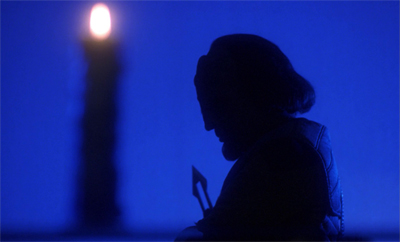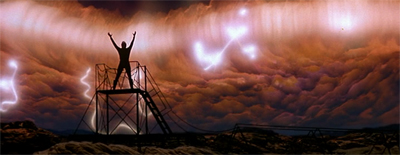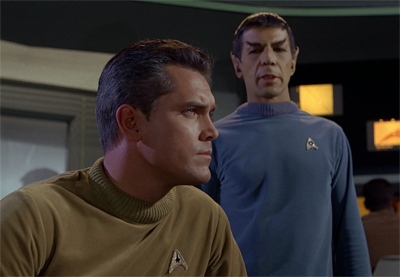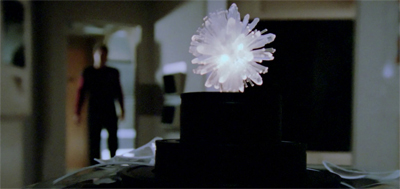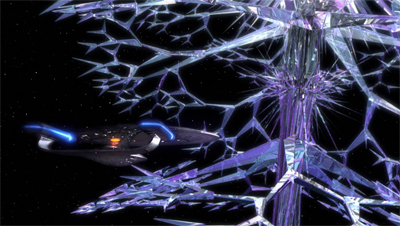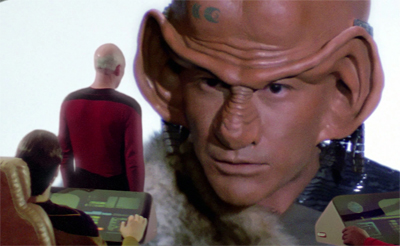This May, we’re taking a look at the fourth (and final) season of Star Trek: Enterprise. Check back daily for the latest review.
The Kir’Shara trilogy is the strongest three-parter of Star Trek: Enterprise‘s fourth season. It could legitimately be argued that the Kir’Shara trilogy is the strongest story of the entire season and one of the strongest stories of the show’s four-season run.
There are a lot of reasons why this is the case. The Kir’Shara trilogy makes great use of the franchise’s continuity and history, without getting too tied down into references for the sake of references. Indeed, there is a valid argument to be made that the trilogy represents the most overt rewriting of continuity across the fourth season, an ironic touch for a season so committed to continuity. The story does excellent work the show’s under-utilised supporting cast. The adventure actually merits three episodes, the story never dragging or wandering off on tangents.

Under a not quite blood red sky…
However, a large part of why this trilogy of episodes works better than the Borderland trilogy or the United trilogy is a simple piece of structuring. The Kir’Shara trilogy has a very clear and linear three-act structure, with each of the three episodes fitting comfortably together while doing their bit to advance and escalate the plot. There are no strange structural detours like the siege in Cold Station 12 or the visit to Andoria in The Aenar. Each of these three episodes is recognisable part of a singular larger story that builds to a crescendo.
The Forge does an excellent job setting up the arc, Awakening does an excellent job raising the stakes, and Kir’Shara does an excellent job tying it all together. The result is a satisfying two-hour television movie broadcast in three forty-minute chunks.

Mapping out an adventure…
Filed under: Enterprise | Tagged: Alice Eve, Andorian, games, james t. kirk, Jonathan Archer, khan, Klingon, List of Star Trek characters (G–M), Math, star trek, StarTrek, Surak, Tellarite, Trekkie, vulcan, Vulcans | 15 Comments »















